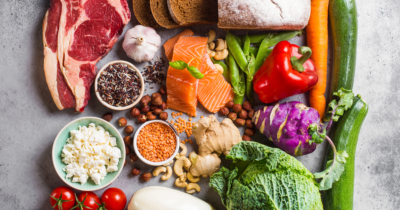
20 Mar National Liver Awareness Month: Fatty Liver Prevention and Treatment
March is National Liver Awareness Month, a month dedicated to raising awareness about the importance of liver health, fatty liver, and the diseases that can affect the liver. The liver is a vital organ in the body that plays many important roles, including filtering toxins from the blood, producing bile to aid in digestion, and storing energy. However, the liver can be affected by various conditions, including viral infections, alcohol abuse, obesity, and other metabolic disorders.
Fatty Liver
Fatty liver disease is one of the most common types of liver disease, and it is a growing health concern around the world. Fatty liver disease occurs when too much fat accumulates in the liver, which can cause inflammation and damage to liver cells over time.
One of the goals of Liver Health Month is to raise awareness about the risk factors for fatty liver disease, such as obesity, insulin resistance, and excessive alcohol consumption.
Fatty Liver & Insulin Resistance

Fatty liver and insulin resistance are two separate conditions that can be related to each other in certain cases.
Insulin is a hormone that helps your body process and uses glucose (sugar) from the food you eat. When you eat, your body releases insulin to signal your cells to absorb glucose from your bloodstream and use it for energy.
Insulin resistance occurs when your cells become less responsive to insulin’s signals, meaning that they absorb less glucose from your bloodstream than they should. This can lead to high levels of glucose in your bloodstream, which can cause various health problems over time.
Typically, your liver stores some fat, but when the amount of fat in your liver exceeds a certain threshold, it can lead to a condition called non-alcoholic fatty liver disease (NAFLD).
Studies have shown that there is a link between insulin resistance and the development of NAFLD. Insulin resistance can cause your liver to produce too much glucose and store too much fat, leading to a buildup of fat in your liver.
In turn, having too much fat in your liver can also worsen insulin resistance. The excess fat in your liver can interfere with insulin’s ability to regulate glucose levels in your bloodstream, leading to even higher levels of glucose.
Insulin resistance and fatty liver are interconnected. Insulin resistance can cause fat to accumulate in the liver, and too much fat can worsen insulin resistance. If you have one of these conditions, it’s important to talk to your healthcare provider about strategies to manage and improve your overall health.
Learn more about my blood sugar balance master program at this link.
How is PCOS a Risk Factor?
PCOS (polycystic ovary syndrome) is a condition that affects the hormonal balance in women and can lead to various health problems, including insulin resistance and metabolic syndrome.
Research suggests that women with PCOS may be at a higher risk of developing fatty liver disease due to the following reasons:
- Insulin resistance: Insulin resistance is a hallmark of PCOS and occurs when the body’s cells become less responsive to insulin. This can lead to high levels of insulin in the blood, which can cause the liver to produce more fat. The exact mechanism by which PCOS increases the risk of NAFLD is not fully understood, but it is thought to be related to insulin resistance. Many women with PCOS have insulin resistance, which means that their body’s cells are less responsive to insulin, the hormone that regulates blood sugar levels. Insulin resistance can lead to high levels of insulin in the blood, which can cause the liver to produce more fat and also make it harder for the liver to break down and remove excess fat.
- Increased androgen levels: Women with PCOS often have higher levels of androgens (male hormones) than normal, which can lead to an increase in abdominal fat. Abdominal fat has been linked to an increased risk of fatty liver disease.
- Inflammation: Inflammation is a common feature of both PCOS and fatty liver disease. Chronic inflammation can lead to liver damage and an increased risk of developing fatty liver disease.
In summary, women with PCOS may be at an increased risk of developing fatty liver disease due to the underlying hormonal and metabolic imbalances associated with the condition. Maintaining a healthy weight, managing insulin resistance, and treating underlying inflammation can help reduce the risk of fatty liver disease in women with PCOS.
How to Get Tested for Fatty Liver?

There are a few different tests that can be done to determine whether someone has fatty liver.
- Blood tests: Blood tests can measure certain liver enzymes and markers, such as alanine transaminase (ALT) and aspartate transaminase (AST). Elevated levels of these enzymes can indicate liver damage or inflammation.
- Imaging tests: Imaging tests, such as an ultrasound, CT scan, or MRI, can provide a picture of the liver and detect the presence of fat. These tests are non-invasive and painless.
- Liver biopsy: A liver biopsy involves taking a small sample of liver tissue and examining it under a microscope. This test is more invasive and carries some risks, but it can provide a definitive diagnosis of fatty liver and determine the extent of liver damage.
If you are concerned that you may have fatty liver, it’s important to talk to your doctor. They can recommend the appropriate tests for your situation and provide guidance on how to manage the condition if it is diagnosed.
Fatty Liver Prevention + Treatment

When it comes to preventing and reversing fatty liver disease, following a healthy diet is an important step. Here are some foods that can help support liver health and potentially reverse fatty liver:
- Fruits and vegetables: These are rich in antioxidants and fibre, which can help reduce inflammation and improve liver function. Aim for a variety of colourful fruits and vegetables, such as berries, leafy greens, citrus fruits, and cruciferous vegetables like broccoli and cauliflower.
- Whole grains: Whole grains like brown rice, quinoa, and whole-wheat bread are rich in fibre and other nutrients that can help improve insulin sensitivity and reduce inflammation.
- Lean protein: Choose lean sources of protein, such as chicken, fish, turkey, and legumes, which are lower in saturated fat and can help support liver function. Reduce high-fat foods such as fried food, full fat dairy, and processed meat.
- Nuts and seeds: These are rich in healthy fats, fibre, and antioxidants, which can help reduce inflammation and support liver health. Examples include almonds, walnuts, chia seeds, and flaxseeds.
- Green tea: Green tea is rich in antioxidants and has been shown to reduce liver fat and improve liver function in people with fatty liver disease.
- Healthy fats: While it’s important to limit saturated and trans fats, including healthy fats in your diet can actually be beneficial for liver health. Examples include olive oil, avocado, fatty fish like salmon and sardines, and nuts and seeds.
The Takeaway
Remember, the key to reversing fatty liver disease is to follow a balanced, healthy diet and to make lifestyle changes that support liver health. Talk to a registered dietitian for personalized advice on how to improve your diet and potentially reverse fatty liver disease.




Sorry, the comment form is closed at this time.